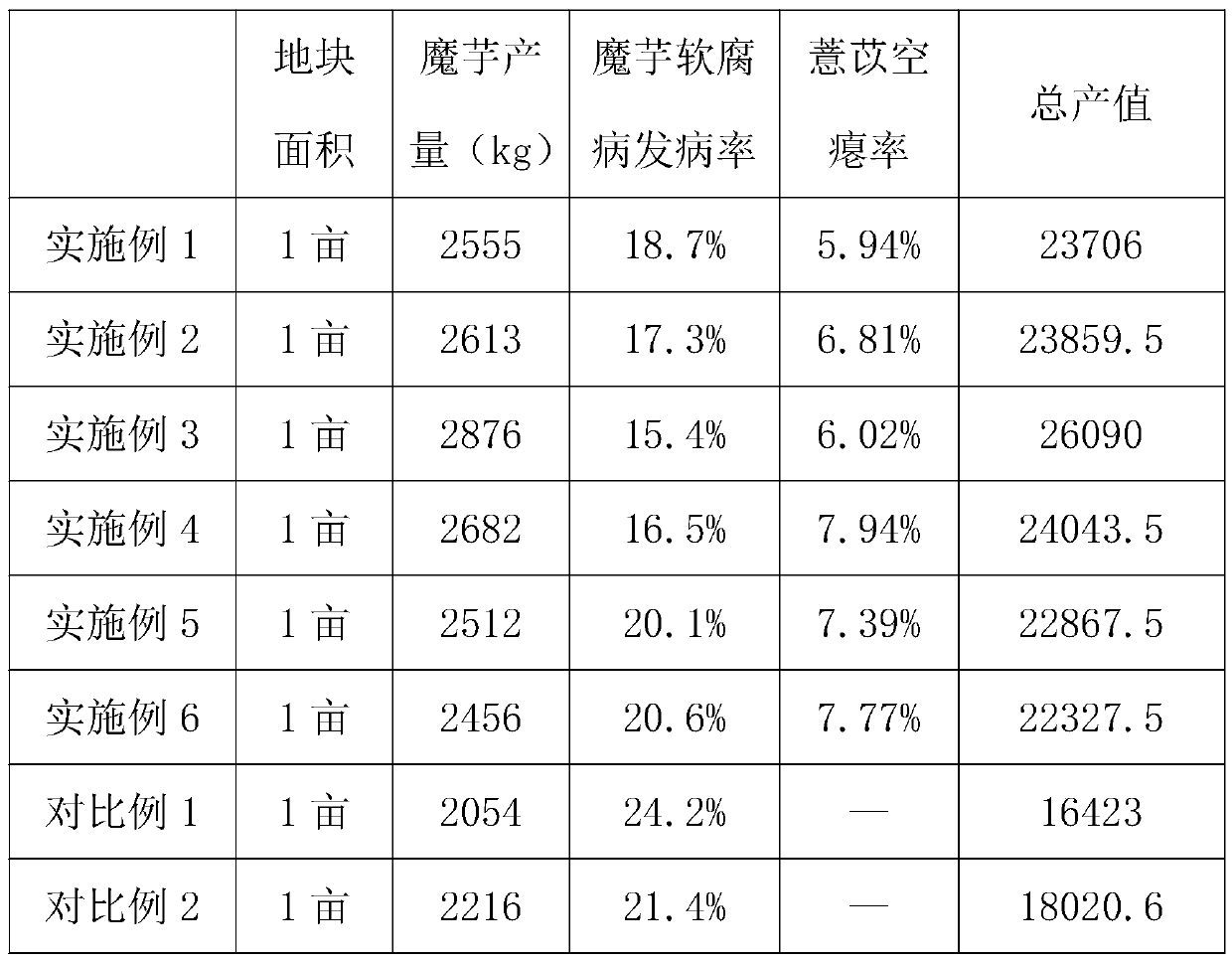Cultivation method for intercropping konjac with coix
A cultivation method and technology of konjac, applied in root crop cultivation, grain cultivation, botanical equipment and methods, etc., can solve the problems of waste of land resources and light resources, no antagonistic effect of diseases, high incidence of diseases, etc., and achieve the goal of reducing konjac diseases Occurs, realizes the effect of increasing production and income, and expanding the planting area
- Summary
- Abstract
- Description
- Claims
- Application Information
AI Technical Summary
Problems solved by technology
Method used
Image
Examples
Embodiment 1
[0048] A cultivation method for konjac and coix intercropping, comprising the following steps:
[0049] S1. Site selection: select plots with gentle slopes, altitudes between 1000 and 1800m, good drainage, deep and loose soil layers, high organic matter content, good soil texture, and neutral or slightly acidic pH values;
[0050] S2, site preparation: after step S1 is applied to the plot selected by decomposing farmyard manure, ridges are formed with a moisture surface width of 120 cm, the height of the ridge is 40 cm, and the width of the ditch is 30 cm;
[0051] S3, selection:
[0052] Konjac seed selection: Select the seed taro that has no disease or very slight disease during the growth process. Its appearance is round or high round, the corm is fully mature, heavy, smooth skin, and bright red terminal buds Thick, shallow bud nests, no disease spots, no wounds;
[0053] Coix seed selection: choose the big and plump seeds of the year;
[0054] S4, seeding:
[0055] Konja...
Embodiment 2
[0073] A cultivation method for konjac and coix intercropping, comprising the following steps:
[0074] S1. Site selection: select plots with gentle slopes, altitudes between 1000 and 1800m, good drainage, deep and loose soil layers, high organic matter content, good soil texture, and neutral or slightly acidic pH values;
[0075] S2, site preparation: after step S1 is applied to the field selected by decomposing manure, ridges are formed with a moisture surface width of 120cm, a ridge height of 50cm, and a ditch width of 30cm;
[0076] S3, selection:
[0077] Konjac seed selection: Select the seed taro that has no disease or very slight disease during the growth process. Its appearance is round or high round, the corm is fully mature, heavy, smooth skin, and bright red terminal buds Thick, shallow bud nests, no disease spots, no wounds;
[0078] Coix seed selection: choose the big and plump seeds of the year;
[0079] S4, seeding:
[0080] Konjac sowing: From mid-March to...
Embodiment 3
[0100] A cultivation method for konjac and coix intercropping, comprising the following steps:
[0101] S1. Site selection: select plots with gentle slopes, altitudes between 1000 and 1800m, good drainage, deep and loose soil layers, high organic matter content, good soil texture, and neutral or slightly acidic pH values;
[0102] S2, site preparation: after step S1 is applied to the plot selected by decomposing farmyard manure, ridges are formed with a moisture surface width of 120 cm, the height of the ridge is 40 cm, and the width of the ditch is 30 cm;
[0103] S3, selection:
[0104] Konjac seed selection: Select the seed taro that has no disease or very slight disease during the growth process. Its appearance is round or high round, the corm is fully mature, heavy, smooth skin, and bright red terminal buds Thick, shallow bud nests, no disease spots, no wounds;
[0105] Coix seed selection: choose the big and plump seeds of the year;
[0106] S4, seeding:
[0107] Kon...
PUM
| Property | Measurement | Unit |
|---|---|---|
| Altitude | aaaaa | aaaaa |
Abstract
Description
Claims
Application Information
 Login to View More
Login to View More - R&D
- Intellectual Property
- Life Sciences
- Materials
- Tech Scout
- Unparalleled Data Quality
- Higher Quality Content
- 60% Fewer Hallucinations
Browse by: Latest US Patents, China's latest patents, Technical Efficacy Thesaurus, Application Domain, Technology Topic, Popular Technical Reports.
© 2025 PatSnap. All rights reserved.Legal|Privacy policy|Modern Slavery Act Transparency Statement|Sitemap|About US| Contact US: help@patsnap.com

